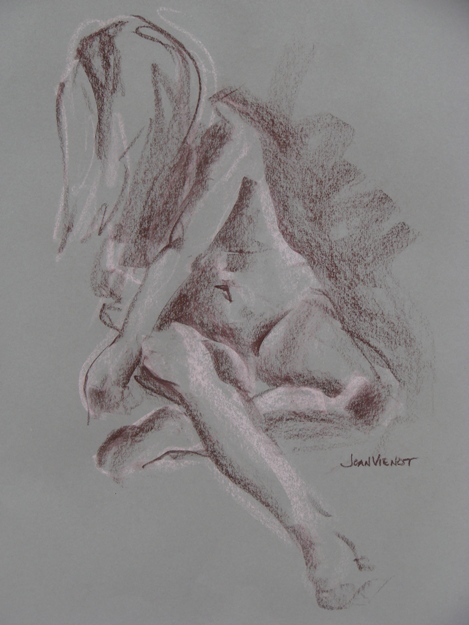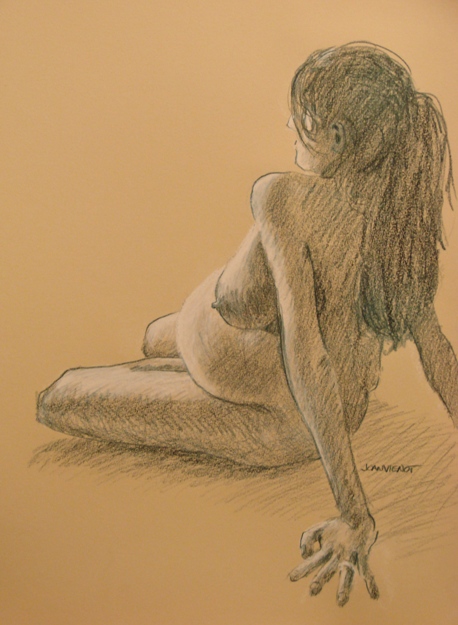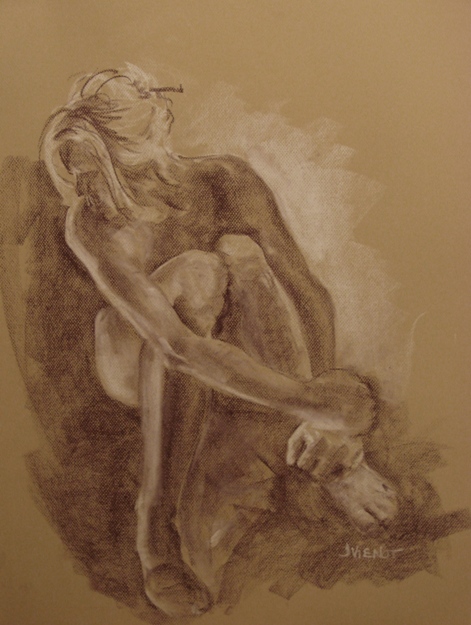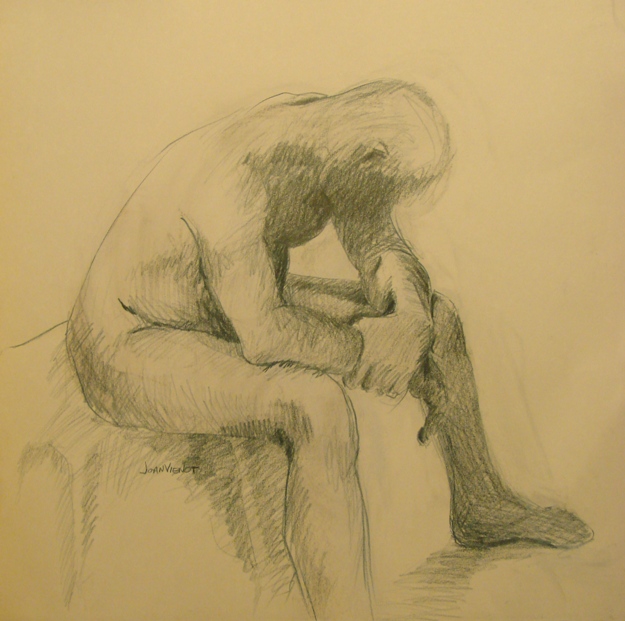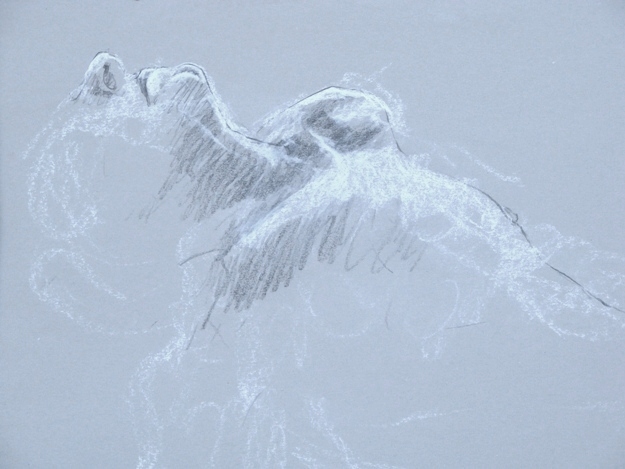Heather Clements taught a 4-hour figure drawing workshop at Studio b. Saturday afternoon. She used slides to show us where the underlying skeletal structure and muscular anatomy were evident in paintings and sculptures by such artists as Rubens, Michelangelo, daVinci, Philip Perlstein, Picasso, Egon Schiele, and others. She also gave us a packet of photos and drawings of the skeletal and muscular anatomy to study and use as a reference.
Our initial assignment was to try to imagine the skeleton underneath the model’s pose and to draw that skeletal pose. It was a hard job. When I attended the University of Northern Colorado, I studied anatomy, not for my Fine Arts major, but for my other major, Health, Physical Education and Recreation. But that was many years ago, and I have forgotten most of it. So I just copied what Heather had shown us, as best I could. I was impressed with how quickly it began to make sense, and I began to feel very comfortable with it. Below is the progression of some of my warm-up skeleton gestures, with the last one showing the fleshy form added during in the final 30 seconds of an 8-minute pose, after the imaginary skeleton was already drawn.
 |
 |
 |
 |
This turned out to be an immensely helpful exercise, as I found it much easier to locate the various parts of the figure in relation to each other later on in the session. But rarely do things ever go quite the way I wish they would when I am developing a new awareness, and I complicated things further by trying out some colored conte that I had been carrying around for about half a year in my box of drawing media. I’ll probably get up the nerve to try the conte again, but I know for sure that I will be getting out my anatomy books and studying the skeletal structure of various poses. Below are my two final drawings from today’s workshop.
 |
 |









